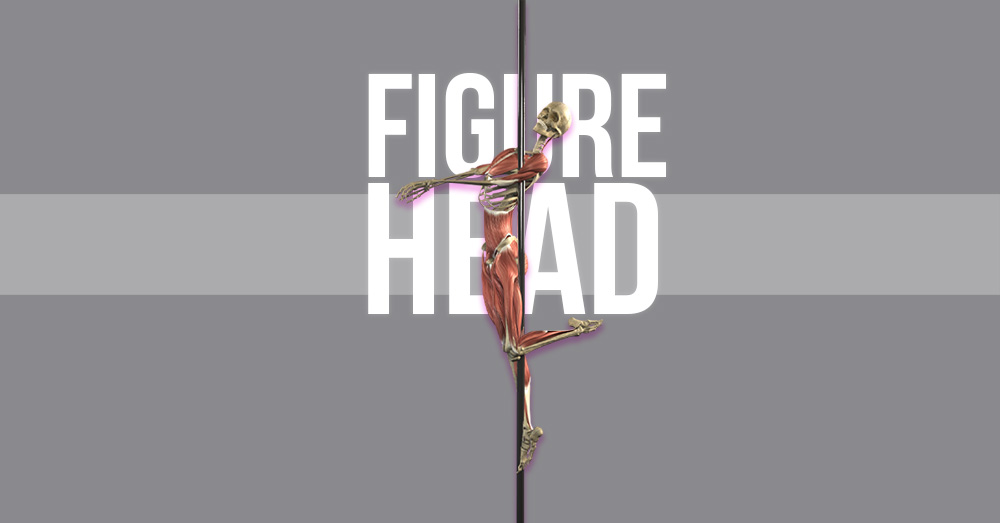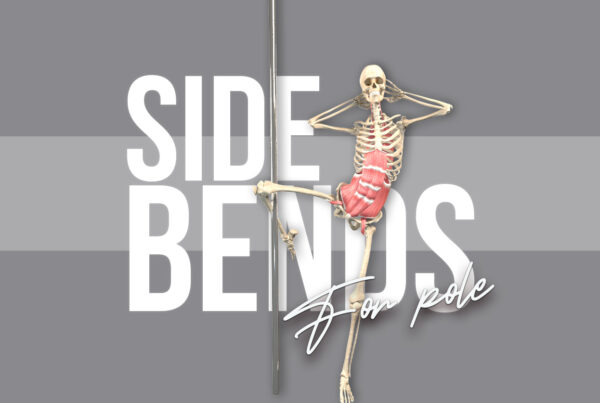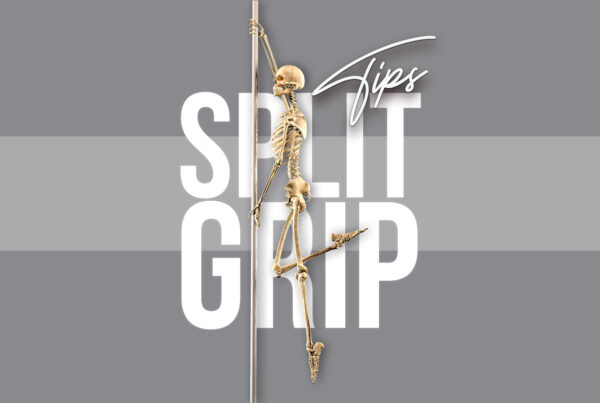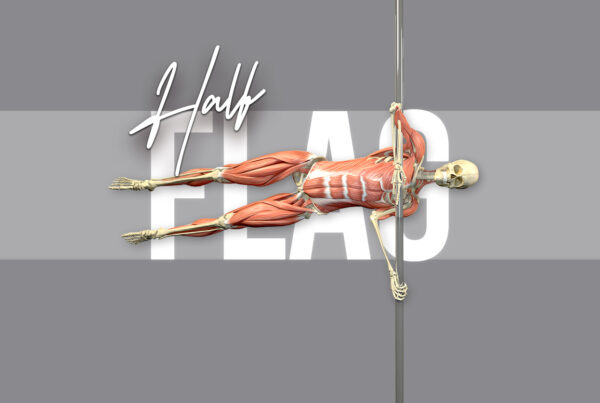Nothing conjures up those ‘twirling music box ballerina’ vibes quite like a well-executed Figurehead on spin pole.
There is a simple elegance to this move which I adore. Often taught fairly early-on in most pole studio courses, the Figurehead doesn’t require inversion and can be reached from a low side climb. There are three contact points with the pole (four, if you count the side butt and ‘back of the knee’ as two separate grips), and the flexi demand is low. But for a trick with comparatively low strength and flexibility pre-requisites, IMO it holds its own in terms of visual impact against far more advanced tricks like the Ballerina and Titanic.
“Simple” (ha!) moves like the Figurehead are the gateway to more advanced moves; the building blocks which create the fundamental grip points and movement patterns of pole dance. Not only are they beautiful to watch, but they are also some of the most interesting to dissect biomechanically.
Et voila… here we are to do exactly that!
What are the key muscles are working to create the stunning lines and seemingly effortless hold of the Figurehead?
Well, let’s figure it out together!
Rather watch than read? I got you! The video below shows a summary of the key points covered in this blog post in a speedy bite-sized visual!
Pole Dance Figurehead anatomy: Inside leg
In our example, the leg is slightly abducted (out to the side) with a little anterior pelvic tilt/very small amount of hip flexion. The main muscles working are the gluteus maximus which keeps the leg pressing backwards into the pole along with the hamstrings which also keep the leg bent.
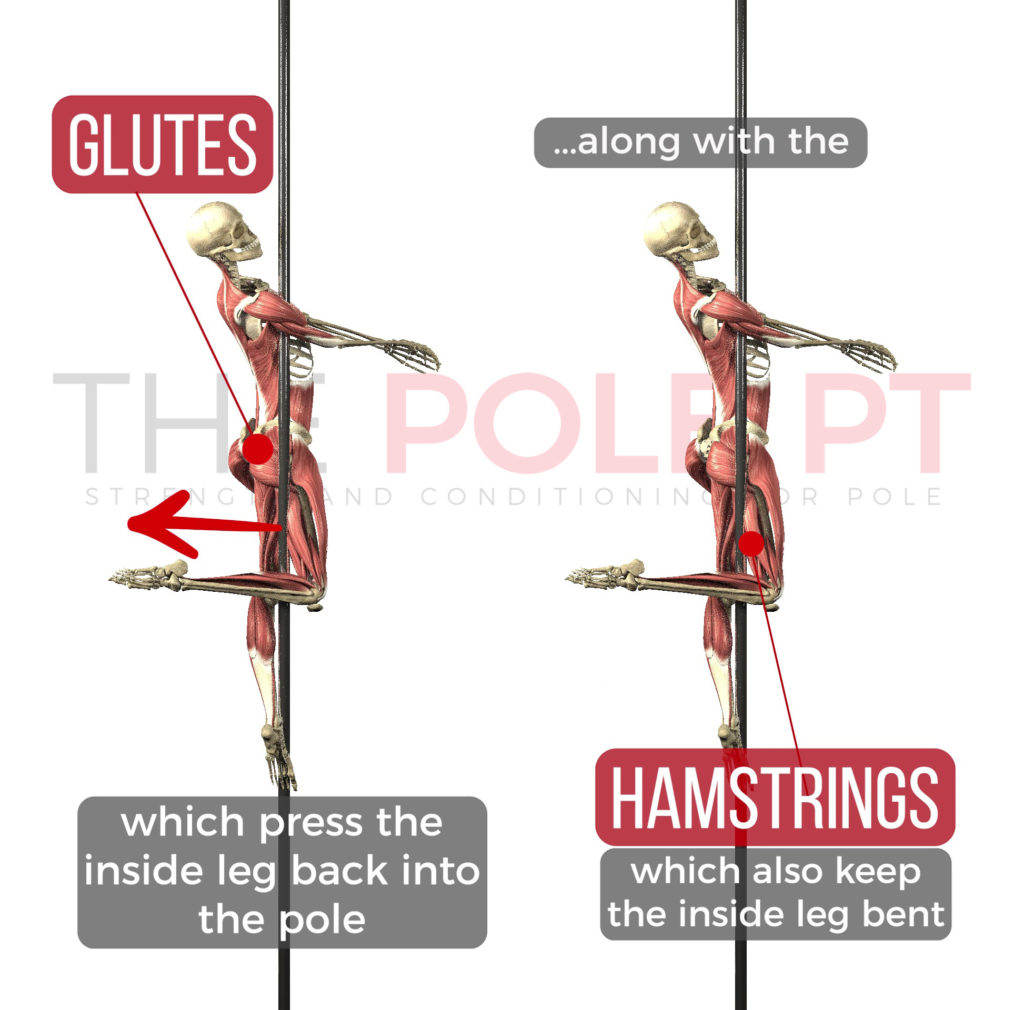
While the engagement is ‘towards’ hip extension, a quick Instagram search for #pdfigurehead will reveal a fair amount of variety when it comes to the actual degree of flexion/extension of the inside hip in this trick.
Bringing the hip into increased extension (Figure B below) will create a ‘bendier’ (I’m making it a word) shape, but note: this will sacrifice much of the side butt grip!
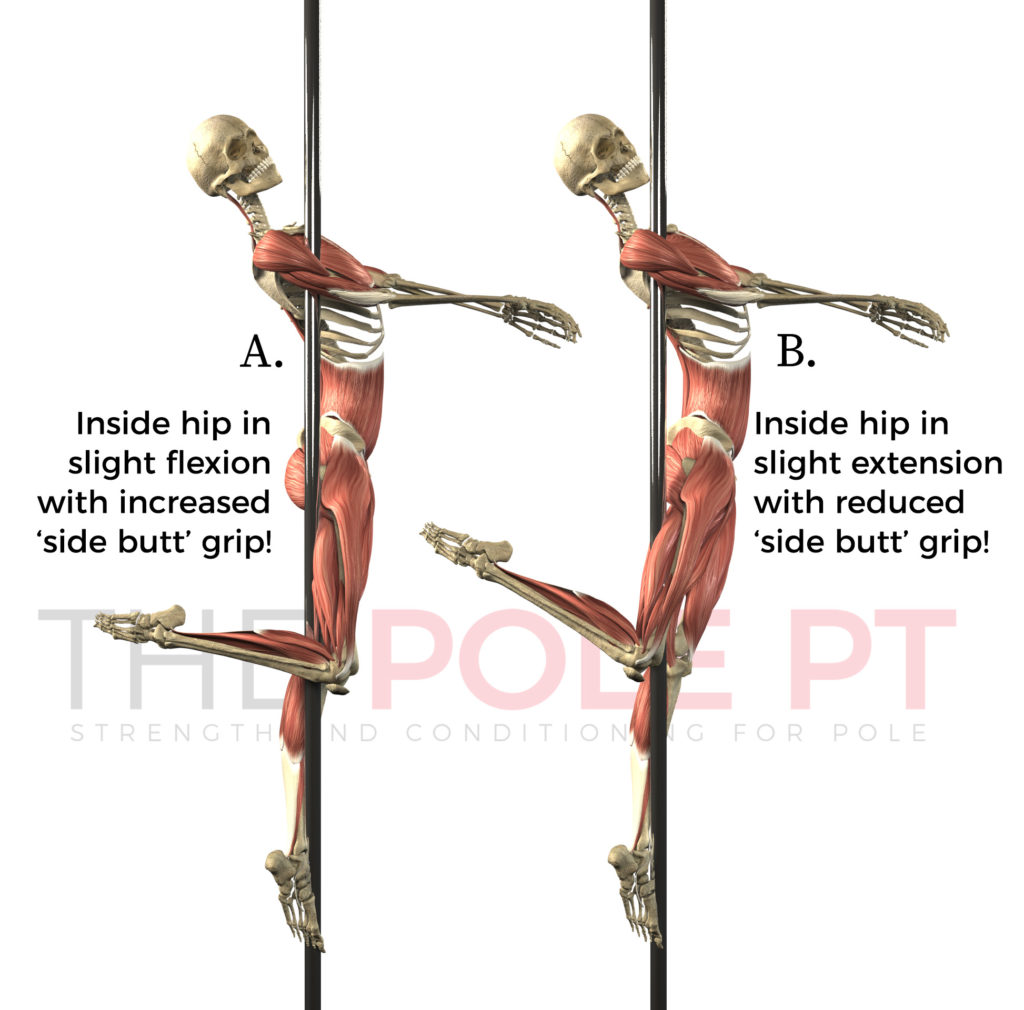
Pole Dance Figurehead anatomy: Outside leg
Like most pole moves, it is an opposition of force – a push and pull – which helps to create tension around the grip points. In the Figurehead, that ‘to me, to you’ is in part created by the inside leg pushing backwards into the pole while the outside leg is pressing forwards.
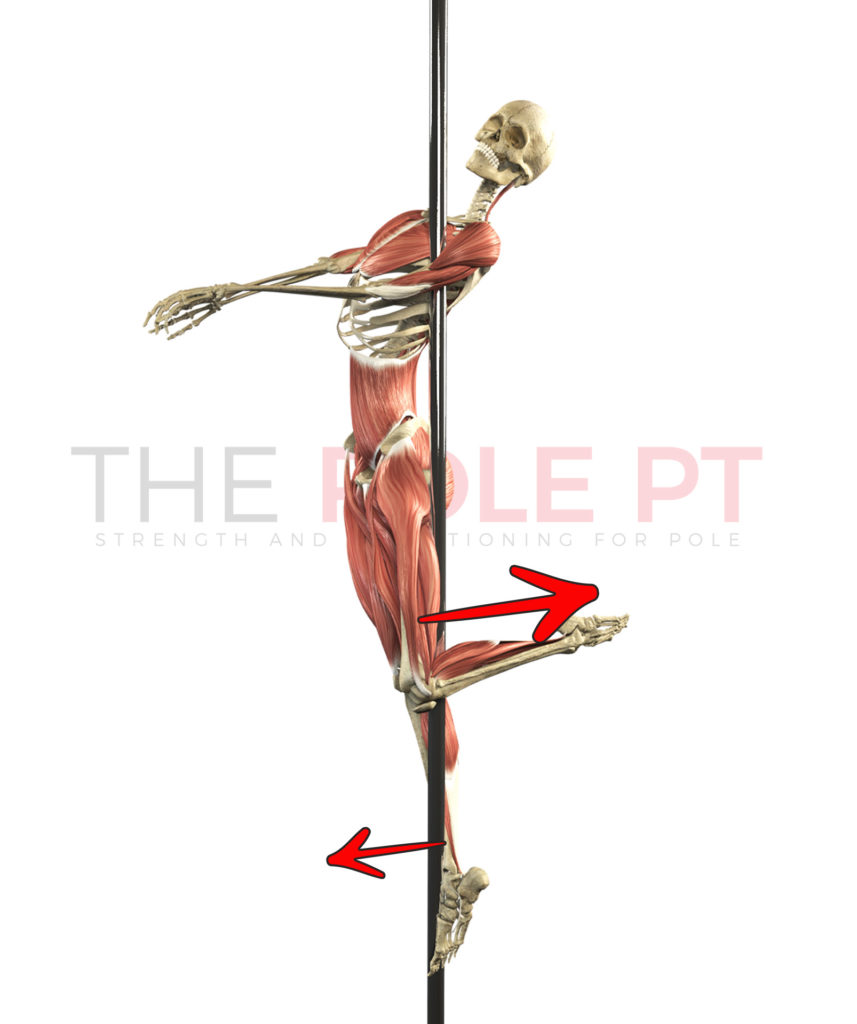
The outside leg is slightly adducted towards the midline of the body, but the primary muscles working are the quadriceps which keep the leg straight and the hip flexors which contract to press the leg forwards into the pole.
The foot is usually pointed (because… lines) but the ankle can be dorsiflexed by the tibialis anterior to create some additional skin-contact around the foot.
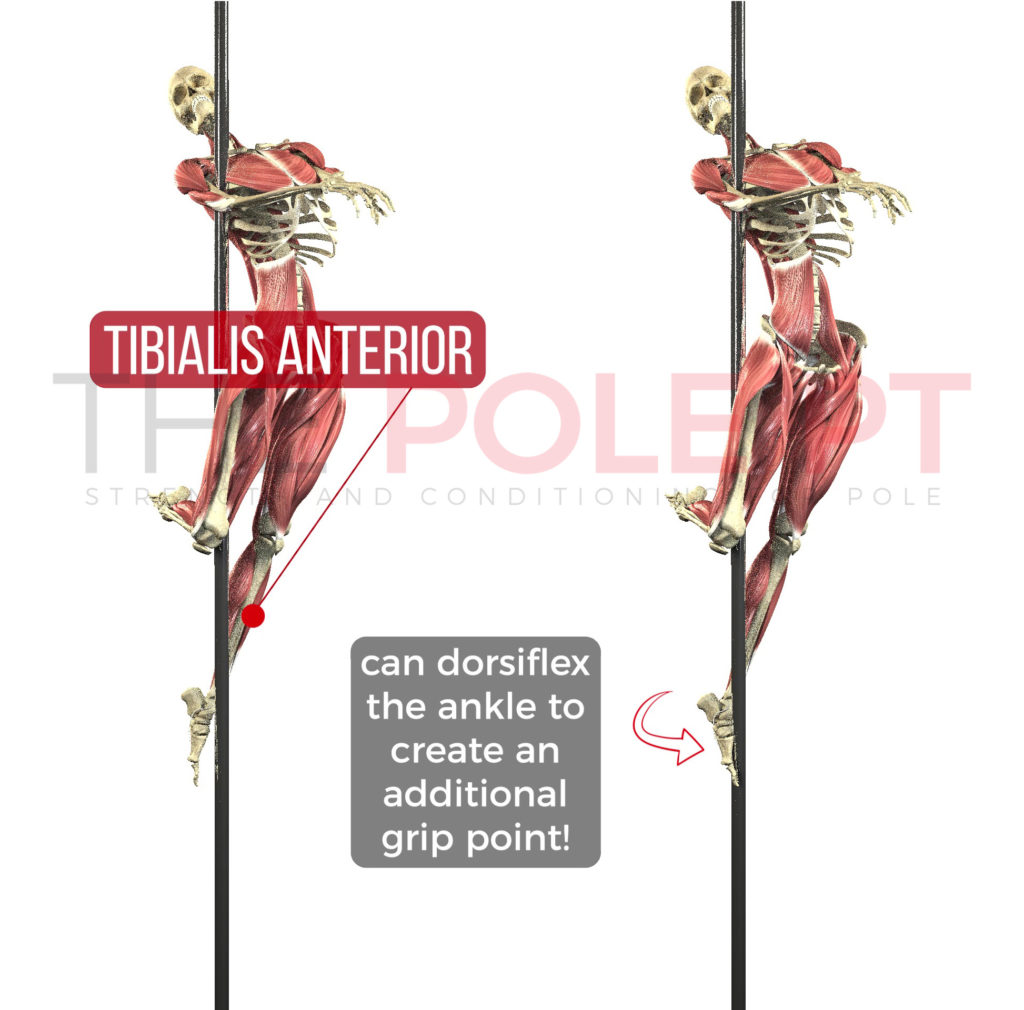
Pole Dance Figurehead anatomy: Spine
The spine is usually slightly extended with a little lateral flexion towards the pole. It is primarily the erector spinae muscles which are working to hold the position of extension along with the rest of the core musculature and particularly the obliques which stabilise the position of slight lateral flexion.
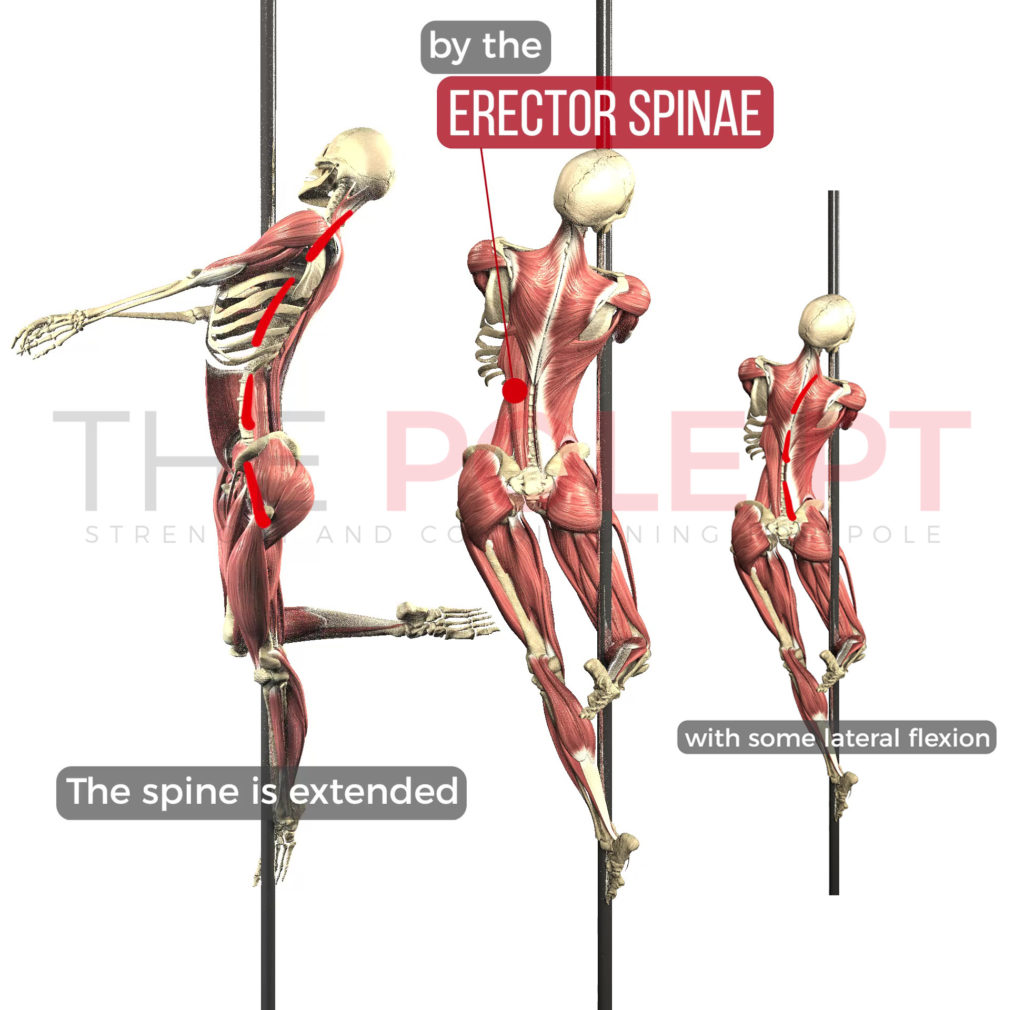
The trapezius also contracts to help keep the chest lifted, preventing the torso sinking and the shoulders shrugging up towards the ears!
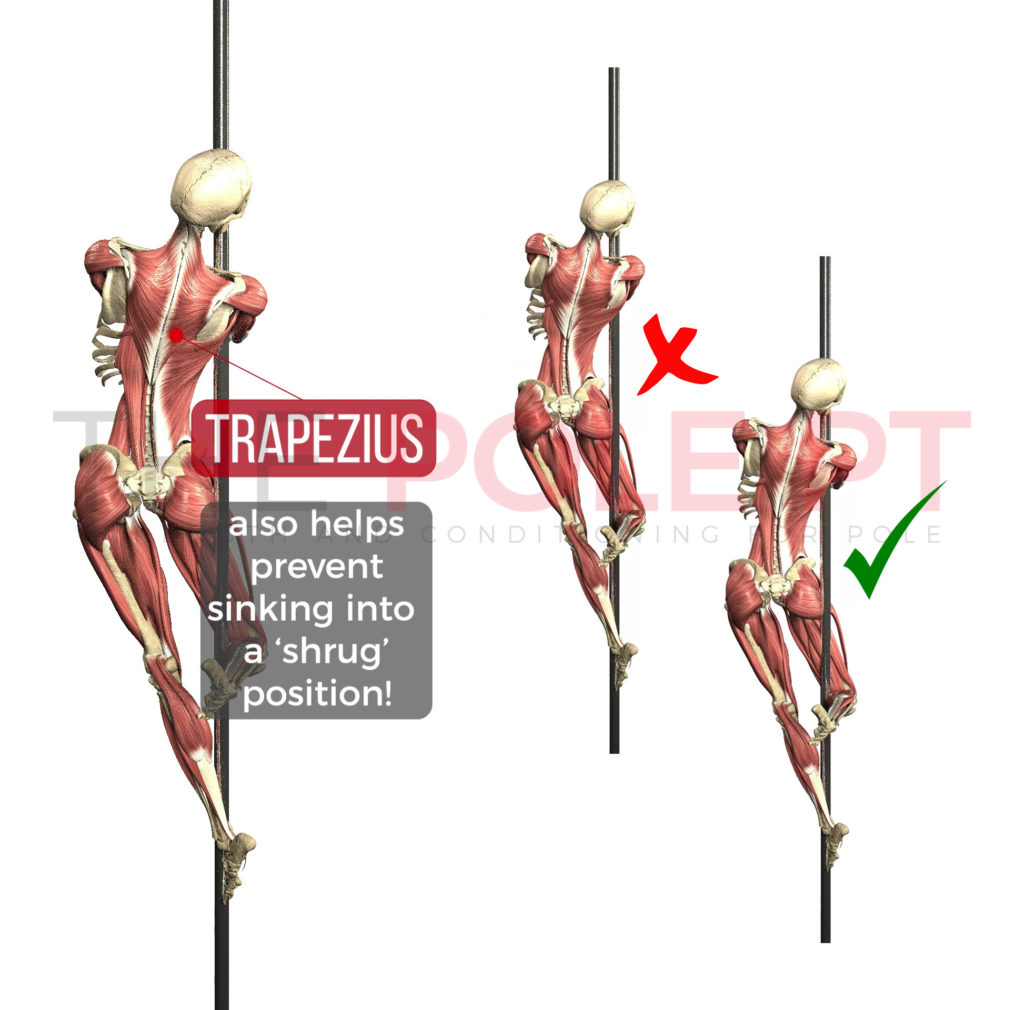
Pole Dance Figurehead anatomy: Arms
The outside arm can be positioned purely for aesthetics. Side note: I LOVE how dramatic this move looks with that outside arm flexed overhead!
The inside arm is held straight by the triceps and the pectoralis major is the main muscle working to squeeze that inside arm into the pole and maintain the grip point there.
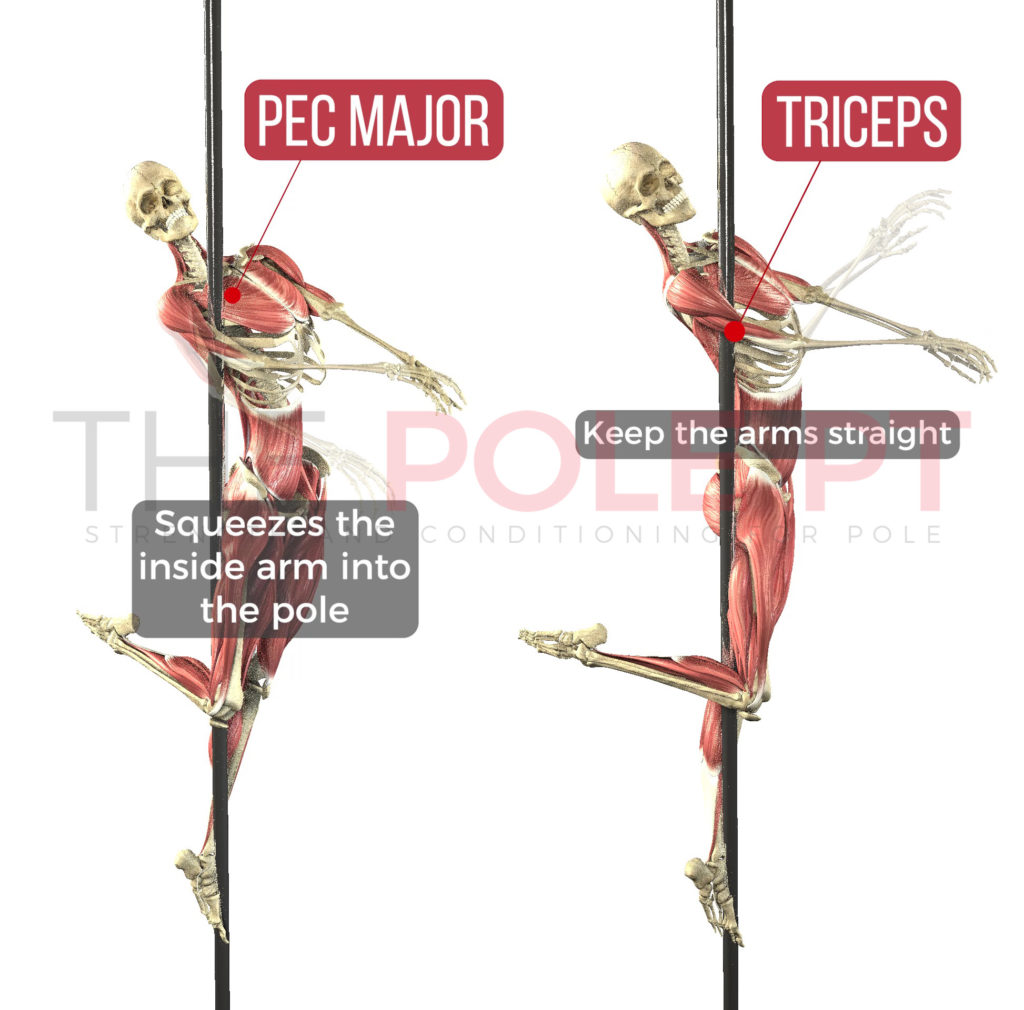
Bonus: Figurehead interactive 3D model
Because I’m now a lifetime member of Club Pole Nerd, I made an interactive 3D model of the Figurehead which you can explore below – just click the model, give it a few seconds to load and you’ll be able to rotate your way around the move and see it from all angles! Oh yes, hello nerdy, nerdy poleness!
Got your Figurehead all figured out? I’d love to see! Tag me on Instagram @ptthepole
Want more pole anatomy nerding?
If you enjoyed this blog post, you’ll love my book, Pole Anatomy! It contains anatomy breakdowns of over 60 different pole tricks with images and 3D models of every move, just like the one above!
Now available in paperback or ebook with immediate download!


